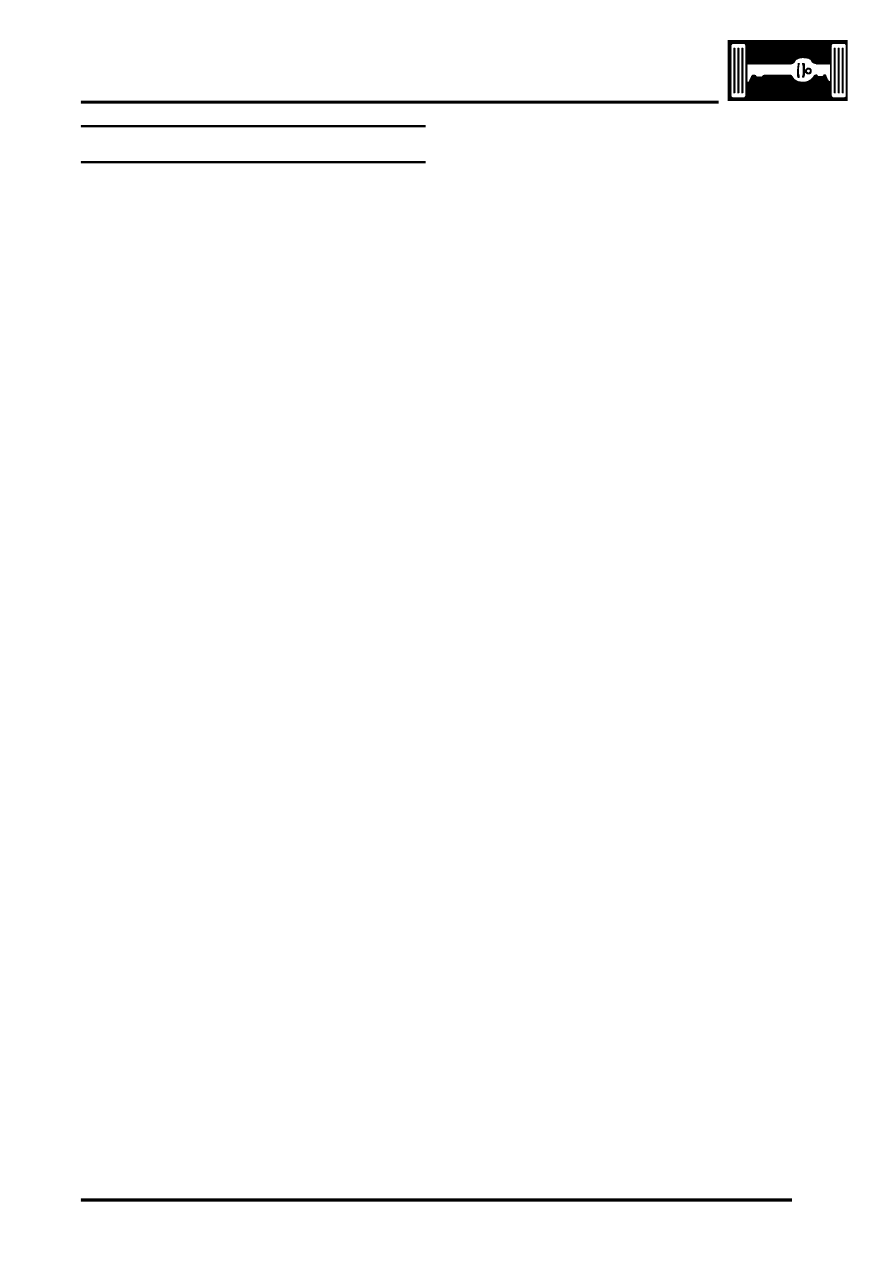Freelander System Description and Operation

DRIVESHAFTS
DESCRIPTION AND OPERATION
47-5
Description
Drive/Propeller Shafts
Two drive shafts transmit drive from the intermediate reduction drive (IRD) to the front wheels, and to two further drive
shafts transmit drive from the final drive (differential) unit to the rear wheels.
Two propeller shafts and a viscous coupling unit (VCU) transmit drive from the IRD to the final drive unit.
Drive Shafts
All four drive shafts are of similar construction, the main difference being in the lengths of the front and rear drive
shafts which differ between engine fitments.
Each drive shaft comprises a solid shaft with inner and outer constant velocity joints. The inner joint is of the tripode
type with spherical bushing to reduce sliding resistance; the shaft and inner joint are one assembly. The outer joint is
of the ball and socket type, with a splined connection between the joint and the shaft. The joints are packed with
grease and protected by gaiters.
Front Propeller Shaft
The front propeller shaft consists of a thin walled tube with a coupling welded to the front end and a conventional
universal joint welded to the rear end. The coupling bolts to the output flange of the IRD. The universal joint is splined
to the input shaft of the VCU and secured by a bolt which is locked by a tabwasher and a 'U' washer.
The coupling reduces vibration and accommodates both angular movement (10 degrees maximum) and axial
movement (50 mm maximum) between the propeller shaft and the IRD.
The universal joint incorporates serviceable, sealed needle bearings.
VCU
The VCU automatically controls the transfer of drive to the rear wheels by limiting the speed differential between the
front and rear propeller shafts. The unit is supported in two propeller shaft bearings attached to the floor cross
member.
The VCU comprises a short cylinder which contains an input shaft supported in a roller bearing race at the front and
a ball bearing race at the rear. Within the cylinder, slotted discs are alternately attached to the outer surface of the
input shaft and the inner surface of the cylinder. An output shaft is welded onto the rear of the cylinder. The input shaft
is attached to the front propeller shaft and the output shaft is attached to the rear propeller shaft.
On models with 1.8 K Series engines, a torsional damper is bolted to a flange on the output shaft.
The cylinder is a sealed unit filled with a silicon jelly. The viscosity of the silicon jelly increases when subjected to
shear. When there is a speed differential between the front and rear propeller shafts, adjacent slotted discs in the VCU
rotate in relation to each other. The shearing action of the rotating slotted discs increases the viscosity and resistance
to rotation of the silicon jelly.
